
Keywords: governance

|
Transformative Novel Technologies and Global Environmental GovernanceF. Rabitz, Cambridge University Press, 2023.
Transformative Novel Technologies are potential gamechangers for confronting climate change, biodiversity loss, and many other elements of the global environmental crisis, allowing us to achieve a more sustainable future. The contemporary and future international governance of ... Keywords: Convention on Biodiversity, gene drive synthetic, GM insects, governance, moratorium, policy, risk |
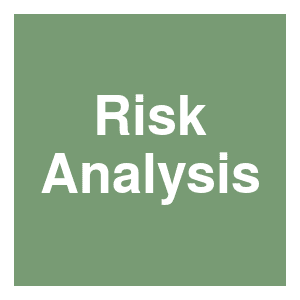
|
General science-technology orientation, specific benefit–risk assessment frame, and public acceptance of gene drive biotechnologyX. Liu, C. L. Goldsmith, K. E. Kang, A. Vedlitz, Z. N. Adelman, L. W. Buchman, E. Heitman and R. F. Medina, Risk Analysis, 2023.
Abstract With limited understanding of most new biotechnologies, how do citizens form their opinion and what factors influence their attitudes about these innovations? In this study, we use gene drive biotechnology in agricultural pest management as an example and theoretically ... Keywords: Convention on Biodiversity, gene drive synthetic, GM insects, governance, moratorium, policy, risk |
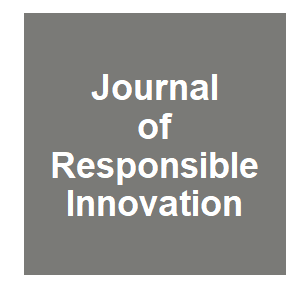
|
Situating the social sciences in responsible innovation in the global south: the case of gene drive mosquitoesK. Ledingham, C. Opesen, S. Hartley and S. Neema, Journal of Responsible Innovation, 10:2264100. 2023.
There has been growing attention in recent years on the potential reconfiguration of responsible innovation (RI) to increase its relevance for global challenges in the Global South. This reconfiguration will require a broad and empowered role for social scientists. Yet RI has ... Keywords: Convention on Biodiversity, gene drive synthetic, GM insects, governance, moratorium, policy, risk |

|
Engineered and natural gene drives: mechanistically the same, yet not same in kindR. F. Medina and J. Kuzma, Nature Communications, 14:5994. 2023.
We propose the use of the terms natural gene drive (NGD) and engineered gene drive (EGD) arguing against James et al.1, who think both should be included within the term “gene drive”, based on their mechanistic similarities. Thanks to CRISPR-Cas-based gene editing, engineered ... Keywords: Convention on Biodiversity, gene drive synthetic, GM insects, governance, moratorium, policy, risk |
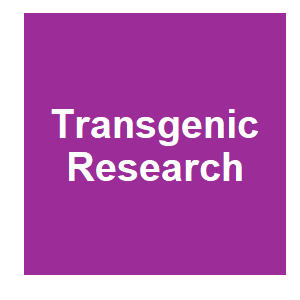
|
Regulatory and policy considerations for the implementation of gene drive-modified mosquitoes to prevent malaria transmissionS. L. James, B. Dass and H. Quemada, Transgenic Research, 2023.
Gene drive-modified mosquitoes (GDMMs) are being developed as possible new tools to prevent transmission of malaria and other mosquito-borne diseases. To date no GDMMs have yet undergone field testing. This early stage is an opportune time for developers, supporters, and possible ... Keywords: Convention on Biodiversity, gene drive synthetic, GM insects, governance, moratorium, policy, risk |

|
Ethical dilemma: Should we get rid of mosquitoes?Talya Hackett, TED-Ed, 2023.
Mosquitoes are responsible for more human deaths every year than any other animal, but very few of the 3,500 mosquito species actually transmit deadly diseases to humans. Scientists have been conducting experiments using engineered technologies called gene drives that could ... Keywords: Convention on Biodiversity, gene drive synthetic, GM insects, governance, moratorium, policy, risk |

|
Assessing potential hybridization between a hypothetical gene drive-modified Drosophila suzukii and nontarget Drosophila speciesS. Wolf, J. Collatz, J. Enkerli, F. Widmer and J. Romeis, Risk Analysis, 2023.
Genetically engineered gene drives (geGD) are potentially powerful tools for suppressing or even eradicating populations of pest insects. Before living geGD insects can be released into the environment, they must pass an environmental risk assessment to ensure that their release ... Keywords: Convention on Biodiversity, gene drive synthetic, GM insects, governance, moratorium, policy, risk |

|
Gene editing and agrifood systemsFAO, FAO, 2022.
Gene-editing technologies represent a promising new tool for plant and animal breeding in low- and middle-income countries. They enhance precision and efficiency over current breeding methods and could lead to rapid development of improved plant varieties and animal breeds. ... Keywords: Convention on Biodiversity, gene drive synthetic, GM insects, governance, moratorium, policy, risk |
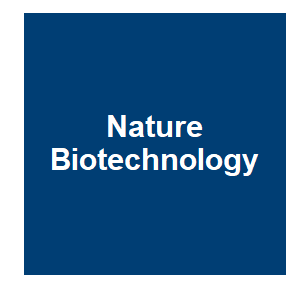
|
Exploring the value of a global gene drive project registryR. I. Taitingfong, C. Triplett, V. N. Vásquez, R. M. Rajagopalan, R. Raban, A. Roberts, G. Terradas, B. Baumgartner, C. Emerson, F. Gould, F. Okumu, C. E. Schairer, H. C. Bossin, L. Buchman, K. J. Campbell, A. Clark, J. Delborne, K. Esvelt, J. Fisher, R., Nature Biotechnology, 2022.
Recent calls to establish a global project registry before releasing any gene-drive-modified organisms (GDOs) have suggested a registry could be valuable to coordinate research, collect data to monitor and evaluate potential ecological impacts, and facilitate transparent ... Keywords: Convention on Biodiversity, gene drive synthetic, GM insects, governance, moratorium, policy, risk |

|
Experts urge caution over biotech that can wipe out insect pestsL. Fauvel, Phys Org, 2022.
Dozens of scientists, experts and campaigners called for a ban on the release of genetically-edited organisms into the wild, in a statement Friday warning of potentially severe risks to the world's pollinators. The appeal was launched at crunch biodiversity talks in Montreal, ... Keywords: Convention on Biodiversity, gene drive synthetic, GM insects, governance, moratorium, policy, risk |
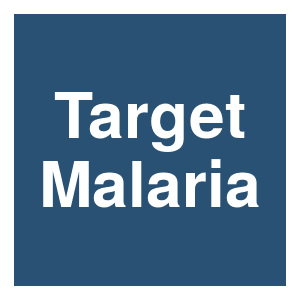
|
East African policy dialogue on research of genetically modified mosquitoes for malaria control and eliminationC. Mugoya, Target Malaria, 2022.
The East African Community Secretariat, in collaboration with the East African Health Research Commission; NEPAD, AFIDEP and IFAKARA Health Institute recently convened an East African regional dialogue in Dar es salaam, Tanzania from 17-19 November 2022 to deliberate the way ... Keywords: Convention on Biodiversity, gene drive synthetic, GM insects, governance, moratorium, policy, risk |
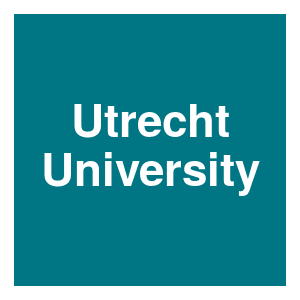
|
Gene drive technologies: navigating the ethical landscapeN. d. Graeff, Utrecht University, 2022.
Gene drives are technologies that modify a particular genetic element in animals or insects so that this genetic element does not follow the typical rules of heredity, and is passed onto future generations with an increased likelihood. Gene drive technologies could be used to ... Keywords: Convention on Biodiversity, gene drive synthetic, GM insects, governance, moratorium, policy, risk |

|
Genetically Modified Mosquitoes to Fight Malaria in Nigeria, Burkina Faso, Mali and Uganda: What Legal Response?O. J. L. Tung, Potchefstroom Electronic Law Journal, 25:1-42. 2022.
Advanced applied research on genetically modified (hereafter GM) insects is being undertaken to control insect vectors of human diseases such as mosquitoes. GM insect technologies are being developed in countries where there is a legal ... Keywords: Convention on Biodiversity, gene drive synthetic, GM insects, governance, moratorium, policy, risk |

|
The principles driving gene drives for conservationS. Hartley, R. Taitingfong and P. Fidelman, Environmental Science and Policy, 135:36-45. 2022.
Gene drive technology is an emerging biotechnology with the potential to address some of the most intractable global biodiversity conservation issues. Scientists are exploring potential gene drive applications for managing invasive species and building resilience in keystone ... Keywords: Convention on Biodiversity, gene drive synthetic, GM insects, governance, moratorium, policy, risk |

|
Governing Gene Drive Technologies: A Qualitative Interview StudyN. de Graeff, K. R. Jongsma, J. E. Lunshof and A. L. Bredenoord, AJOB Empirical Bioethics, 13:107-124. 2022.
Gene drive technologies (GDTs) bias the inheritance of a genetic element within a population of non-human organisms, promoting its progressive spread across this population. If successful, GDTs may be used to counter intractable problems such as vector-borne diseases. A key issue ... Keywords: Convention on Biodiversity, gene drive synthetic, GM insects, governance, moratorium, policy, risk |

|
Prescribing engagement in environmental risk assessment for gene drive technologyS. Hartley, A. Kokotovich and C. McCalman, Regulation and Governance, 2022.
Abstract Gene drive technology is a nascent biotechnology with the potential to purposefully alter or eliminate a species. There have been broad calls for engagement to inform gene drive governance. Over the past seven years, the gene drive community has been developing risk ... Keywords: Convention on Biodiversity, gene drive synthetic, GM insects, governance, moratorium, policy, risk |

|
Regulation of genetically engineered (GE) mosquitoes as a public health tool: a public health ethics analysisZ. Meghani, Globalization and Health, 18:21. 2022.
In recent years, genetically engineered (GE) mosquitoes have been proposed as a public health measure against the high incidence of mosquito-borne diseases among the poor in regions of the global South. While uncertainties as well as risks for humans and ecosystems are entailed ... Keywords: Convention on Biodiversity, gene drive synthetic, GM insects, governance, moratorium, policy, risk |

|
A preliminary framework for understanding the governance of novel environmental technologies: Ambiguity, indeterminateness and driftF. Rabitz, M. Feist, M. Honegger, J. Horton, S. Jinnah and J. Reynolds, Earth System Governance, 12:100134. 2022.
We propose a conceptual framework to explain why some technologies are more difficult to govern than others in global environmental governance. We start from the observation that some technologies pose transboundary environmental risks, some provide capacities for managing such ... Keywords: Convention on Biodiversity, gene drive synthetic, GM insects, governance, moratorium, policy, risk |

|
A Closing Window of Opportunity for Gene Drive Governance in the United StatesK. L. Warmbrod, M. Montague and G. K. Gronvall, Health Security, 20:3-5. 2022.
The COVID-19 pandemic has brought forth a number of biotechnological advances to enhance the public's health: new diagnostic tests, mRNA vaccines, and new antiviral medications. Biotechnology is also being used to address global challenges like climate change, food insecurity, ... Keywords: Convention on Biodiversity, gene drive synthetic, GM insects, governance, moratorium, policy, risk |

|
Conditions for Investment in Genetic Biocontrol of Pest Vertebrates in AustraliaL. Carter, A. Mankad, S. Campbell, W. Ruscoe, K. P. Oh, P. R. Brown, M. Byrne, M. Tizard and T. Strive, Frontiers in Agronomy, 3. 2022.
Managing pest vertebrate species in Australia is a significant challenge for government, industry, research sectors and land-managers. Innovative tools such as genetic biocontrol offers decision-makers a potentially effective means of reducing the impact of pest species ... Keywords: Convention on Biodiversity, gene drive synthetic, GM insects, governance, moratorium, policy, risk |

|
iGEM and Gene Drives: A Case Study for GovernanceP. Millett, T. Alexanian, M. J. Palmer, S. W. Evans, T. Kuiken and K. Oye, Health Security, 2022.
Gene drives have already challenged governance systems. In this case study, we explore the International Genetically Engineered Machine (iGEM) competition's experiences in gene drive-related research and lessons in developing, revising, and implementing a governance system. ... Keywords: Convention on Biodiversity, gene drive synthetic, GM insects, governance, moratorium, policy, risk |
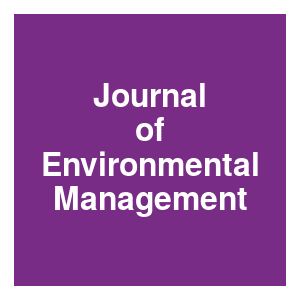
|
Stakeholder engagement to inform the risk assessment and governance of gene drive technology to manage spotted-wing drosophilaA. E. Kokotovich, S. K. Barnhill-Dilling, J. E. Elsensohn, R. Li, J. A. Delborne and H. Burrack, Journal of Environmental Management, 307:114480. 2022.
Emerging biotechnologies, such as gene drive technology, are increasingly being proposed to manage a variety of pests and invasive species. As one method of genetic biocontrol, gene drive technology is currently being developed to manage the invasive agricultural pest ... Keywords: Convention on Biodiversity, gene drive synthetic, GM insects, governance, moratorium, policy, risk |

|
Procedurally Robust Risk Assessment Framework for Novel Genetically Engineered Organisms and Gene DrivesKuzma, J., Regulation and Governance, 15:1144-1165. 2021.
In this article, a new framework for improving risk assessments of novel genetically engineered organisms (GEOs) is developed and applied. The Procedurally Robust Risk Assessment Framework (PRRAF) provides a set of principles and criteria for assessing and enhancing risk ... Keywords: Convention on Biodiversity, gene drive synthetic, GM insects, governance, moratorium, policy, risk |

|
Weltnaturschutzunion sucht PositionAnonymous, Informationsdienst Gentechnik, 2021.
Die Weltnaturschutzunion IUCN will in den nächsten drei Jahren eine breite interne Diskussion führen, ob Gentechnik und Gene Drives im Naturschutz eingesetzt werden sollen. Mit diesem Beschluss ist der Versuch gentechnikfreundlicher Organisationen, mit Artenschutz-Argumenten ... Keywords: Convention on Biodiversity, gene drive synthetic, GM insects, governance, moratorium, policy, risk |

|
Calling the latest gene technologies ‘natural’ is a semantic distraction — they must still be regulatedJ. A. Heinemann, D. J. Paull, S. Walker and B. Kurenbach, The Conversation, 2021.
Legislators around the world are being asked to reconsider how to regulate the latest developments in gene technology, genome editing and gene silencing. Both the European Court of Justice and the New Zealand High Court have ruled that genome editing techniques should remain ... Keywords: Convention on Biodiversity, gene drive synthetic, GM insects, governance, moratorium, policy, risk |

|
New report demands moratorium on gene drivesGM Watch, GM Watch, 2021.
To help the public understand what's at stake, the Germany-based NGO Save Our Seeds (SOS) has published a report, "Gene Drives: The New Dimension of Genetic Engineering", which can be downloaded as a pdf document. The report provides a scientifically founded overview of how ... Keywords: Convention on Biodiversity, gene drive synthetic, GM insects, governance, moratorium, policy, risk |

|
Gene Drive Organisms: A new dimension of genetic engineeringV. Henn and M. Imken, Save Our Seeds, 2021.
Enabled by new genetic engineering techniques such as CRISPR/Cas9, so-called gene drives have been developed in recent years that enable humans to spread new genes throughout the genome of wild animal populations. Gene drives force the inheritance of newly introduced genes to be ... Keywords: Convention on Biodiversity, gene drive synthetic, GM insects, governance, moratorium, policy, risk |
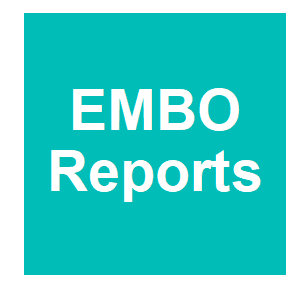
|
The viral eraB. Giese, EMBO reports, 22:e53229. 2021.
New biotechnologies such as gene drives and engineered viruses herald a viral era that would give humans exceptional power over any organism at the level of the genotype. In synthetic biology, orthogonality—in the sense of lack of interference—between different systems or ... Keywords: Convention on Biodiversity, gene drive synthetic, GM insects, governance, moratorium, policy, risk |

|
The international governance of gene drive organismsF. Rabitz, Environmental Politics, 2021.
Gene Drive Organisms (GDOs) are a proposed biotechnological intervention that might generate significant benefits for the conservation and sustainable use of biological diversity while also raising critical biosafety issues. Despite their inevitable transboundary effects, their ... Keywords: Convention on Biodiversity, gene drive synthetic, GM insects, governance, moratorium, policy, risk |

|
Earth system interventions as technologies of the AnthropoceneJ. L. Reynolds, Environmental Innovation and Societal Transitions, 40:132-146. 2021.
Earth system interventions (ESIs)—intentional large-scale interventions in Earth systems—are not entirely new. However, in response to threats to sustainability, particularly from climate change and biodiversity loss, some scientists and others are researching, developing, ... Keywords: Convention on Biodiversity, gene drive synthetic, GM insects, governance, moratorium, policy, risk |

|
The legal regulation of gene drive technologiesC. Elves, Univeristy of Oxford, 2021.
Gene drive technologies purport to provide a panacea and yet in doing so present unprecedented risks that threaten to change, potentially irreversibly, the way in which we live in the world. Gene drive technologies raise questions about what ends societies ought to seek for their ... Keywords: Convention on Biodiversity, gene drive synthetic, GM insects, governance, moratorium, policy, risk |

|
Selection of Sites for Field Trials of Genetically Engineered Mosquitoes with Gene DriveG. C. Lanzaro, M. Campos, M. Crepeau, A. Cornel, A. Estrada, H. Gripkey, Z. Haddad, A. Kormos, S. Palomares and W. Sharpee, bioRxiv, 2021.04.28.441877. 2021.
Novel malaria control strategies using genetically engineered mosquitoes (GEMs) are on the horizon. Population modification is one approach wherein mosquitoes are engineered with genes rendering them refractory to the malaria parasite coupled with a low-threshold, Cas9-based gene ... Keywords: Convention on Biodiversity, gene drive synthetic, GM insects, governance, moratorium, policy, risk |
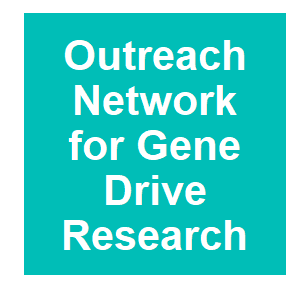
|
How do local communities participate in gene drive research?Outreach Network for Gene Drive Research, Outreach Network for Gene Drive Research, 2021.
Keywords: Convention on Biodiversity, gene drive synthetic, GM insects, governance, moratorium, policy, risk |

|
US Gene Drive Governance: A Special Feature in Health SecurityL. Warmbrod, A. Kobokovich, R. West, G. K. Gronvall and M. Montague, Health Security, 19:131-132. 2021.
The novel potential of gene drives and related genetic pest control measures highlights a gap in the oversight of products using such technologies in the United States. The US Coordinated Framework for Regulation of Biotechnology, as applied by US Environmental Protection Agency, ... Keywords: Convention on Biodiversity, gene drive synthetic, GM insects, governance, moratorium, policy, risk |

|
Ethics of Genome EditingEuropean Group on Ethics, European Group on Ethics in Science and New Technologies, 2021.
This Opinion addresses the profound ethical questions raised and revived by them. It analyses various domains of application, from human health to animal experimentation, from livestock breeding to crop variety and to gene drives. With its wide view across areas, it identifies ... Keywords: Convention on Biodiversity, gene drive synthetic, GM insects, governance, moratorium, policy, risk |

|
Differentiated impacts of human interventions on nature: Scaling the conversation on regulation of gene technologiesJ. A. Heinemann, D. J. Paull, S. Walker and B. Kurenbach, Elementa: Science of the Anthropocene, 9. 2021.
Biotechnology describes a range of human activities in medicine, agriculture, and environmental management. One biotechnology in particular, gene technology, continues to evolve both in capacity and potential to benefit and harm society. The purpose of this article is to offer a ... Keywords: Convention on Biodiversity, gene drive synthetic, GM insects, governance, moratorium, policy, risk |

|
Evaluating Gene Drive Approaches for Public BenefitM. R. Santos, GMOs: Implications for Biodiversity Conservation and Ecological Processes, 2020.
Gene drive approaches—those which bias inheritance of a genetic element in a population of sexually reproducing organisms—have the potential to provide important public benefits. The spread of selected genetic elements in wild populations of organisms may help address certain ... Keywords: Convention on Biodiversity, gene drive synthetic, GM insects, governance, moratorium, policy, risk |

|
Engineered Gene Drives: Ecological, Environmental, and Societal ConcernsJ. Kuzma, GMOs: Implications for Biodiversity Conservation and Ecological Processes, 2020.
This chapter overviews the types, purposes, and potential impacts of gene drive organisms (GDOs) and discusses challenges with foreseeing and assessing these impacts prior to their environmental release. It concludes with a few examples of risk analysis methods and governance ... Keywords: Convention on Biodiversity, gene drive synthetic, GM insects, governance, moratorium, policy, risk |

|
Transformation and slippage in co-production ambitions for global technology development: The case of gene driveK. Ledingham and S. Hartley, Environmental Science & Policy, 116:78-85. 2020.
Co-production is an increasingly popular framework for knowledge generation, evaluation and decision making. Despite its potential to open up decisions and practices to the input of others, co-production regularly falls short of its transformative ambitions. Through documentary ... Keywords: Convention on Biodiversity, gene drive synthetic, GM insects, governance, moratorium, policy, risk |

|
Engineering biological diversity: the international governance of synthetic biology, gene drives, and de-extinction for conservationJ. L. Reynolds, Current Opinion in Environmental Sustainability, 49:1-6. 2020.
In the face of insufficient progress in conserving and restoring biodiversity, the in situ use of advanced genetic modification, gene drives, and other biotechnologies for conservation purposes are being considered, researched, and developed. This paper introduces the methods, ... Keywords: Convention on Biodiversity, gene drive synthetic, GM insects, governance, moratorium, policy, risk |

|
Brave New Planet: Reshaping Nature Through Gene DrivesE. Lander, Brave New Planet, 2020.
A new technology, called gene drives, has the power to spread any genetic instructions you wish across an entire animal or plant species in the wild. It might let us restore ecosystems ravaged by invasive species, or help species adapt to climate change. And, it might save ... Keywords: Convention on Biodiversity, gene drive synthetic, GM insects, governance, moratorium, policy, risk |
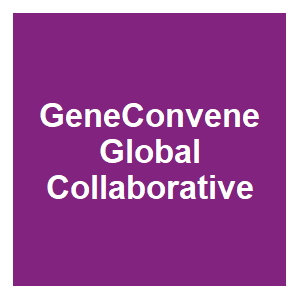
|
Engineered Gene Drives: Policy and Regulatory Considerations Webinar Series by The GeneConvene Global Collaborative October-December 2020Hector Quemada and David O'Brochta, GeneConvene Global Collaborative, 2020.
In this series of webinars the regulatory and policy challenges of moving new innovative genetic biocontrol products such as gene drive technologies to the field will be featured. Each seminar will be ~60 minutes in length followed by questions and answers. Keywords: Convention on Biodiversity, gene drive synthetic, GM insects, governance, moratorium, policy, risk |

|
Engineered Gene Drives: Regulatory and Policy Considerations Webinar Series by The GeneConvene Global Collaborative October-December 2020Hector Quemada and David O'Brochta, GeneConvene Global Collaborative, 2020.
This is series of webinars the regulatory and policy challenges of moving new innovative genetic biocontrol products such as gene drive technologies to the field will be featured. Keywords: Convention on Biodiversity, gene drive synthetic, GM insects, governance, moratorium, policy, risk |

|
GeneConvene Global Collaborative Webinar Series Oct-Dec 2020Hector Quemada and David O'Brochta, GeneConvene Global Collaborative, 2020.
This is series of webinars the regulatory and policy challenges of moving new innovative genetic biocontrol products such as gene drive technologies to the field will be featured. Keywords: Convention on Biodiversity, gene drive synthetic, GM insects, governance, moratorium, policy, risk |

|
Global citizen deliberation on genome editingJ. S. Dryzek, D. Nicol, S. Niemeyer, S. Pemberton, N. Curato, A. Bächtiger, P. Batterham, B. Bedsted, S. Burall, M. Burgess, G. Burgio, Y. Castelfranchi, H. Chneiweiss, G. Church, M. Crossley, J. de Vries, M. Farooque, M. Hammond, B. He, R. Mendonça, J., Science, 369:1435. 2020.
Here we show how, as the global governance vacuum is filled, deliberation by a global citizens' assembly should play a role, for legitimate and effective governance. Keywords: Convention on Biodiversity, gene drive synthetic, GM insects, governance, moratorium, policy, risk |

|
Responsible innovation in biotechnology: Stakeholder attitudes and implications for research policyP. Roberts, J. Herkert and J. Kuzma, Elementa, 2020.
Using a mixed methods approach, we analyzed the attitudes of different biotechnology stakeholders, particularly those working in areas related to genetically modified organisms (GMOs) in agriculture and the environment, towards the principles and practices of RI. Homogenous focus ... Keywords: Convention on Biodiversity, gene drive synthetic, GM insects, governance, moratorium, policy, risk |
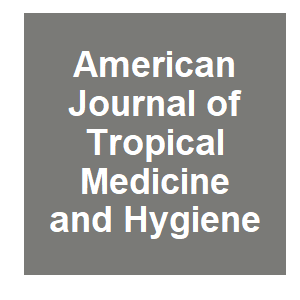
|
Global Governing Bodies: A Pathway for Gene Drive Governance for Vector Mosquito ControlA. Kelsey, D. Stillinger, T. B. Pham, J. Murphy, S. Firth and R. Carballar-Lejarazú, American Journal of Tropical Medicine and Hygiene, 2020.
We examined the current institutions and governing bodies among various continents that could have an impact on gene drive governance or the potential to adapt to its future use. Possible governance strategies also are proposed that seek to bridge gaps and promote an ethically ... Keywords: Convention on Biodiversity, gene drive synthetic, GM insects, governance, moratorium, policy, risk |

|
Providing a policy framework for responsible gene drive research: an analysis of the existing governance landscape and priority areas for further researchD. Thizy, I. Coche and J. de Vries, Wellcome Open Research, 2020.
D. Thizy, I. Coche and J. de Vries (2020). Wellcome Open Research. doi: 10.12688/wellcomeopenres.16023.1 In this manuscript, we review the existing regulatory landscape around gene drive research and map areas of convergence and divergence, as well as gaps in relation to ... Keywords: Convention on Biodiversity, gene drive synthetic, GM insects, governance, moratorium, policy, risk |

|
Who is afraid of genetically modified mosquitoes?G. Odogwu, The PUNCH, 2020.
Genetically Modified Organisms have raised concerns in our clime, the same way they have in other countries of the world – where a clear line is drawn between the pro and the anti-GMO citizens. Nonetheless, this modern biotechnological technique is still at its infancy here. As ... Keywords: Convention on Biodiversity, gene drive synthetic, GM insects, governance, moratorium, policy, risk |

|
Mosquito district workshop focuses on Keys trialsS. Matthis, KEYSWEEKLY, 2020.
Now that the Oxitec “Friendly Mosquito” trials have been approved by the federal and state governments, it’s up to the Florida Keys Mosquito Control District to decide if, when and where to embrace the technology said to decrease the chances of mosquito-borne diseases such ... Keywords: Convention on Biodiversity, gene drive synthetic, GM insects, governance, moratorium, policy, risk |

|
Genetically modified mosquitoes to be released in Florida and TexasO. Ron, The Jerusalem Post, 2020.
A plan to release 750 million genetically modified mosquitoes in Florida and Texas has been approved, The Guardian reported. According to the plan, the Aedes aegypti mosquitoes will be released into the wild, as they contain a special protein that would kill female offspring, ... Keywords: Convention on Biodiversity, gene drive synthetic, GM insects, governance, moratorium, policy, risk |

|
Before genetically modified mosquitoes are released, we need a better EPAN. Kofler and J. Kuzma, The Boston Globe, 2020.
While the attention of the American public has rightfully been focused on the COVID-19 pandemic, its associated racial disparities, and broader issues of structural racism, the US government made a serious public health decision — one that could affect our health and our ... Keywords: Convention on Biodiversity, gene drive synthetic, GM insects, governance, moratorium, policy, risk |

|
Are Genetically Modified Mosquitoes Coming To Florida?M. Taylor, Y100, 2020.
I'm not even going to lie, mosquitoes should be classified under domestic terrorism. The flying, biting bugs you can barely see wreak havoc on my life every single summer. I'm not sure if I'm allergic to them, but whenever I'm bit by them, that area of my skin swells up. It's the ... Keywords: Convention on Biodiversity, gene drive synthetic, GM insects, governance, moratorium, policy, risk |

|
The Florida Keys are one step closer to getting genetically modified mosquitoesD. Goodhue, Miami Herald, 2020.
An international biotech company is one step closer to being able to release genetically modified mosquitoes in the Florida Keys. The Florida Department of Agriculture and Consumer Services this week granted Oxitec an experimental use permit to release potentially millions of ... Keywords: Convention on Biodiversity, gene drive synthetic, GM insects, governance, moratorium, policy, risk |

|
Synthetic Biology: Research Needs for Assessing Environmental ImpactsC. M. Warner, S. R. Carter, R. F. Lance, F. H. Crocker, H. N. Meeks, B. L. Adams, M. L. Magnuson, T. Rycroft, K. Pokrzywinski and E. J. Perkins, Synthetic Biology 2020: Frontiers in Risk Analysis and Governance, 2019.
Synthetic biology and its applications have the potential to greatly improve economic development, public health, environmental stewardship, technological advancement, and many other areas. In May 2017, sixty individuals gathered in Lexington, Massachusetts for a workshop ... Keywords: Convention on Biodiversity, gene drive synthetic, GM insects, governance, moratorium, policy, risk |
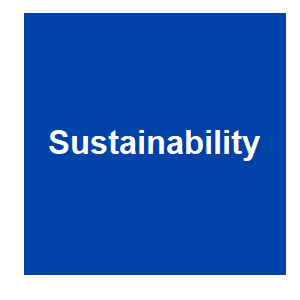
|
Sustainability as a framework for considering gene drive mice for invasive rodent eradicationBarnhill-Dilling, SKS, M.; Blondel, D. V.; Godwin, J., Sustainability, 11:1334. 2019.
Gene drives represent a dynamic and controversial set of technologies with applications that range from mosquito control to the conservation of biological diversity on islands. Currently, gene drives are being developed in mice that may one day serve as an important tool for ... Keywords: Convention on Biodiversity, gene drive synthetic, GM insects, governance, moratorium, policy, risk |

|
Anomaly handling and the politics of gene drivesS. W. Evans and M. J. Palmer, Journal of Responsible Innovation, 5:S223-S242. 2018.
Decisions about the development and use of gene drives are framing broader debates about the need for fundamental changes to biotechnology regulatory systems. We summarize this debate and describe how gene drives are being constructed as potential anomalies within the regulatory ... Keywords: Convention on Biodiversity, gene drive synthetic, GM insects, governance, moratorium, policy, risk |

|
Harnessing gene driveJ. Min, A. L. Smidler, D. Najjar and K. M. Esvelt, Journal of Responsible Innovation, 5. 2018.
Determining whether, when, and how to develop gene drive interventions responsibly will be a defining challenge of our time. Here we describe capabilities, safeguards, applications, and opportunities relevant to gene drive technologies. Keywords: Convention on Biodiversity, gene drive synthetic, GM insects, governance, moratorium, policy, risk |

|
A roadmap for gene drives: using institutional analysis and development to frame research needs and governance in a systems contextJ. Kuzma, F. Gould, Z. Brown, J. Collins, J. Delborne, E. Frow, K. Esvelt, D. Guston, C. Leitschuh, K. Oye and S. Stauffer, Journal of Responsible Innovation, 5:S13-S39. 2018.
This paper reports on a workshop held in February 2016 to explore the complex intersection of political, economic, ethical, and ecological risk issues associated with gene drives. Workshop participants were encouraged to use systems thinking and mapping to describe the ... Keywords: Convention on Biodiversity, gene drive synthetic, GM insects, governance, moratorium, policy, risk |

|
Mapping research and governance needs for gene drivesJ. Delborne, J. Kuzma, F. Gould, E. Frow, C. Leitschuh and J. Sudweeks, Journal of Responsible Innovation, 5:S4-S12. 2018.
This special issue represents both deep and broad thinking about gene drives. The papers were first drafted nearly two years ago, and since then have been reviewed and revised to flesh out key arguments and take account of ongoing developments in the field. This field has moved ... Keywords: Convention on Biodiversity, gene drive synthetic, GM insects, governance, moratorium, policy, risk |

|
Gene drives and the expanding horizon of governanceE. Fisher, Journal of Responsible Innovation, 5:S1-S3. 2018.
Like other areas of emerging science and technology that trigger prolonged public debate over their transformative prospects, gene drives simultaneously generate prospects for new knowledge, hoped-for benefits, and formidable concerns. Their ability to bias inheritance of and in ... Keywords: Convention on Biodiversity, gene drive synthetic, GM insects, governance, moratorium, policy, risk |

|
Ethical, legal and social aspects of the approach in SudanB. B. El Sayed, C. A. Malcolm, A. Babiker, E. M. Malik, M. A. H. El Tayeb, N. S. Saeed, A. H. D. Nugud and B. G. J. Knols, Malaria Journal, 8:S3. 2009.
The global malaria situation, especially in Africa, and the problems frequently encountered in chemical control of vectors such as insecticide resistance, emphasize the urgency of research, development and implementation of new vector control technologies that are applicable at ... Keywords: Convention on Biodiversity, gene drive synthetic, GM insects, governance, moratorium, policy, risk |

Contact
David O’Brochta
Foundation for the
National Institutes of Health
geneconvenevi@fnih.org
RSS

